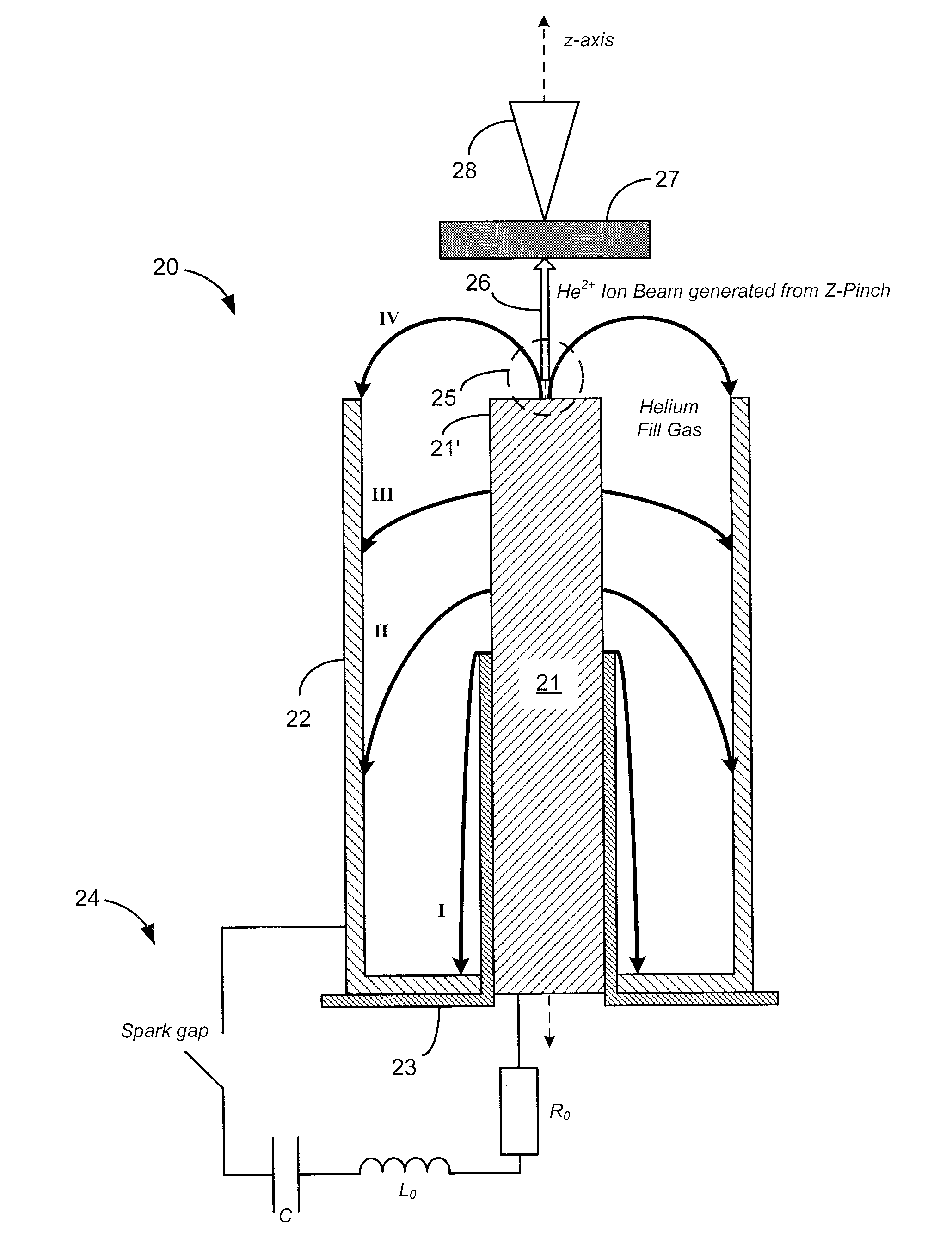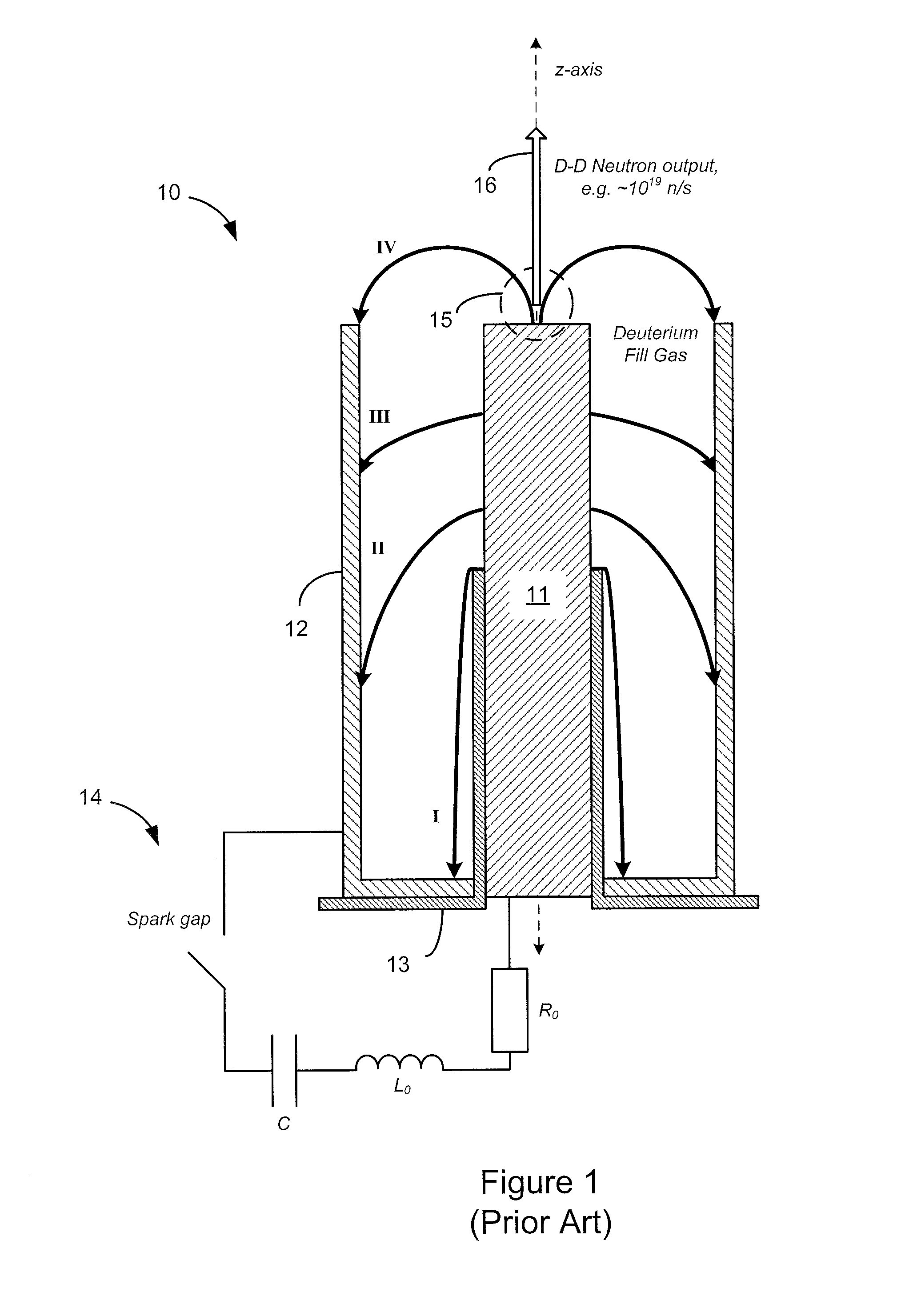Dense plasma focus (DPF) accelerated non radio isotopic radiological source
- Summary
- Abstract
- Description
- Claims
- Application Information
AI Technical Summary
Benefits of technology
Problems solved by technology
Method used
Image
Examples
Embodiment Construction
[0026]Turning now to the drawings, FIG. 2 shows a schematic cross-sectional view of a first exemplary embodiment of the DPF-accelerated, non-radio-isotopic, radiological source of the present invention, generally indicated at reference character 20. In particular, the radiological source is shown configured as a neutron source to produce neutrons having energy spectra similar to an AmBe source. For this purpose a beryllium target 27 is shown positioned along a z-axis. And a dense plasma focus (DPF) is provided having a conventional Mather-type architecture including an elongated central anode 21, a coaxially aligned outer cathode 22 positioned around and spaced from the anode, and a coaxially aligned dielectric 23 for insulating between the anode and cathode. Furthermore, a pulse generator 24 is provided connected to the anode and cathode, and simplistically represented by a circuit with a spark gap, capacitor, inductor, and resistor. It is appreciated that various types of pulse ge...
PUM
 Login to View More
Login to View More Abstract
Description
Claims
Application Information
 Login to View More
Login to View More - R&D
- Intellectual Property
- Life Sciences
- Materials
- Tech Scout
- Unparalleled Data Quality
- Higher Quality Content
- 60% Fewer Hallucinations
Browse by: Latest US Patents, China's latest patents, Technical Efficacy Thesaurus, Application Domain, Technology Topic, Popular Technical Reports.
© 2025 PatSnap. All rights reserved.Legal|Privacy policy|Modern Slavery Act Transparency Statement|Sitemap|About US| Contact US: help@patsnap.com



